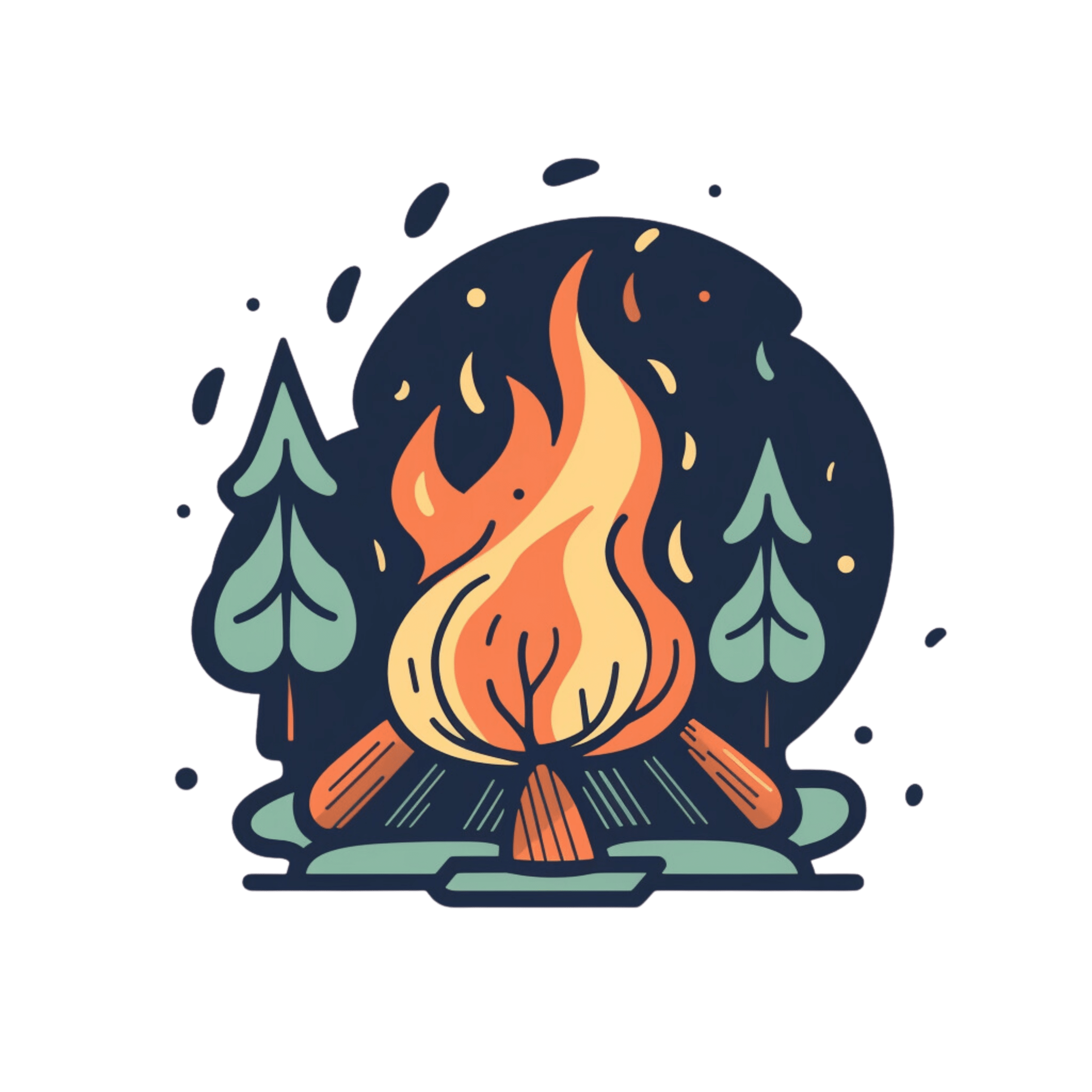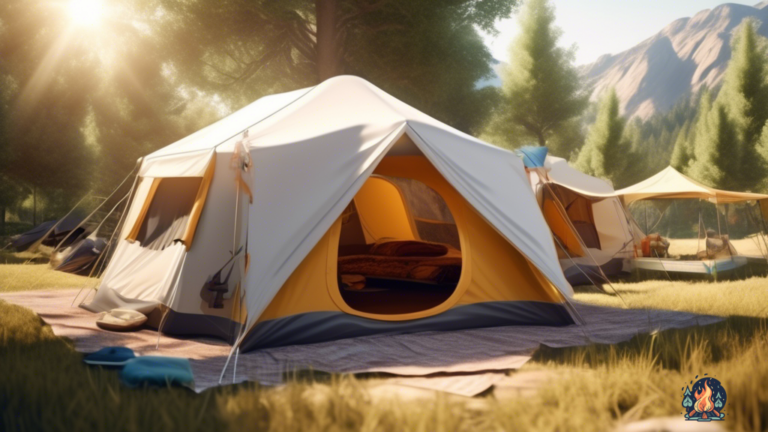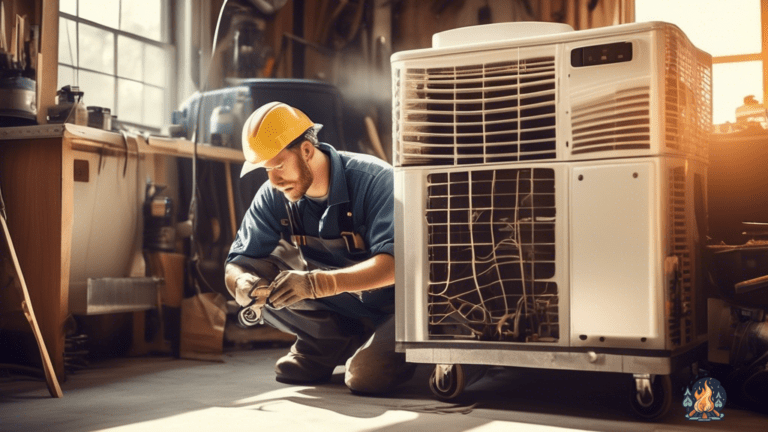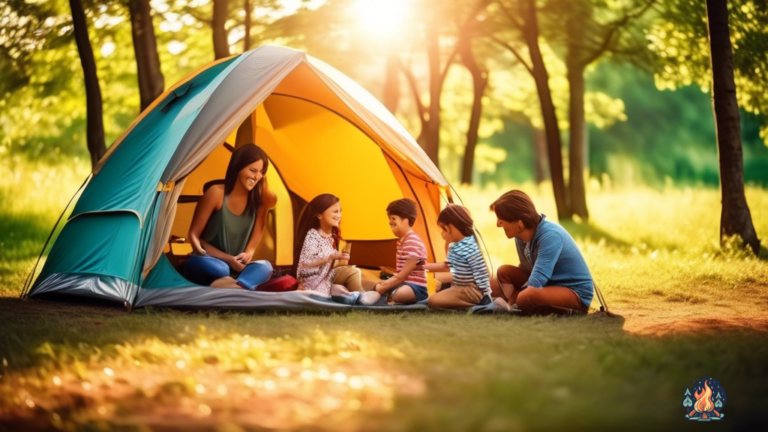Savor The Flavor: Open Fire Cooking Techniques
by Kevin Fairbanks • Updated: January 30, 2024
Unleash your inner chef with these mouthwatering open fire cooking techniques. Learn how to savor the flavor and take your culinary skills to new heights. Click now and elevate your cooking game today!
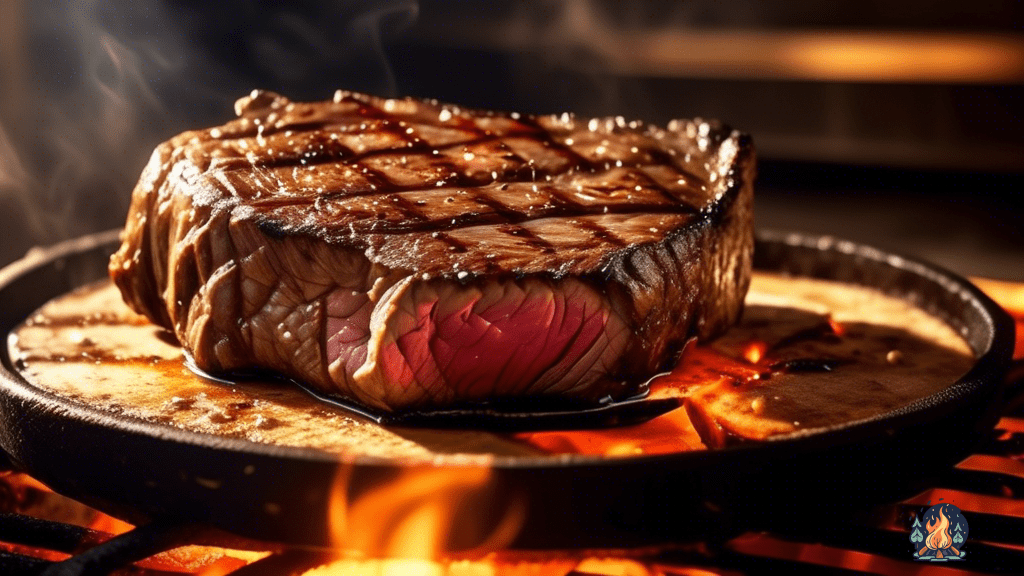
Are you tired of the same old boring meals? Are you yearning for a culinary adventure that will ignite your taste buds and set your soul on fire? Well, look no further! In this article, we will take you on a journey into the world of open fire cooking techniques, where you will savor the flavor like never before.
Picture this: the crackling sound of the fire, the mesmerizing dance of the flames, and the intoxicating aroma of food cooking over an open flame. It’s like a symphony for your senses, where every bite is a crescendo of flavors. Whether you’re a seasoned grill master or a novice in the kitchen, open fire cooking will take your culinary skills to new heights. So roll up your sleeves, grab your tongs, and get ready to embark on a gastronomic adventure that will leave you craving for more.
Key Takeaways
- Choosing the right firewood is crucial for successful open fire cooking.
- Direct heat and indirect heat are two different methods of open fire cooking.
- Having the right tools and equipment is essential for a successful open fire cooking experience.
- Open fire cooking allows for creativity and artistry in the kitchen.
Choosing the Right Firewood
When it comes to selecting the perfect firewood, it’s essential to consider the "firestarter potential" and find wood that will ignite effortlessly. You don’t want to be struggling with damp wood that refuses to catch fire, like a stubborn teenager refusing to get out of bed in the morning.
No, you want wood that’s eager to burn, like a labrador retriever chasing after a tennis ball. Look for dry hardwoods like oak or maple, because let’s face it, wet wood is about as useful as a screen door on a submarine when it comes to starting a fire.
So, be picky with your firewood selection; don’t settle for anything less than wood that practically begs to be set ablaze.
Now, let’s talk about the size of your firewood. You don’t want to be dealing with massive logs that make you feel like you’re auditioning for a lumberjack competition. Trust me, you don’t need to prove your manliness by wrestling with gigantic logs of wood.
Instead, opt for smaller pieces that are easier to handle, like those cute little logs that are perfect for roasting marshmallows over a campfire. Plus, smaller pieces of wood will ignite faster and burn more evenly, ensuring that you don’t end up with a fire that fizzles out quicker than a birthday candle.
So, remember, choose your firewood wisely, my friend, and let the flames of your open fire cooking adventures ignite effortlessly.
Building and Maintaining a Fire
To successfully create a warm and inviting fire for your cooking experience, you’ll need to master the art of building and maintaining it. It’s not just about throwing some logs together and lighting a match, oh no! There’s a science to it, my friend. Let me break it down for you in a handy-dandy table:
| Step | Technique | Pro Tip |
|---|---|---|
| 1 | Lay the Foundation | Start with a base of small, dry twigs. This will provide a good airflow for the fire to grow. Think of it as the foundation of a house, but instead of bricks, it’s twigs. |
| 2 | Build the Structure | Once you have a solid foundation, add larger pieces of wood, creating a teepee or log cabin shape. This will help the fire burn evenly and efficiently. It’s like building a little wood house for your flames. |
| 3 | Light ‘er Up | Use a match or a lighter to ignite the twigs at the base. Stand back and watch as the fire comes to life. It’s like magic, but with fire. Just be careful not to singe your eyebrows. |
Now that you’ve built a beautiful fire, it’s time to maintain it. No slacking off now, this fire needs your attention. Keep an eye on it and make sure it doesn’t go out. Add more wood as needed, but don’t smother the flames. You want a nice, steady burn, not a blazing inferno. Think of it as nurturing a delicate little plant, except instead of water, it needs wood. And instead of leaves, it has flames. And instead of growing, it’s providing heat for your delicious meal. Okay, so maybe it’s not exactly like a plant, but you get the idea. So go forth, my friend, and conquer the art of building and maintaining a fire. Your taste buds will thank you. And your friends will be impressed.
Direct Heat vs. Indirect Heat Cooking
Contrary to popular belief, there’s a big ol’ difference between direct heat and indirect heat cooking methods, my friend.
Now, when it comes to direct heat, we’re talkin’ about throwin’ those steaks or burgers right over the flames. It’s like they’re havin’ a sizzlin’ dance party with the fire, gettin’ all up close and personal. This method is perfect if you want a quick sear and some nice grill marks. But let me tell ya, you gotta keep a close eye on those bad boys, ’cause they can go from perfectly charred to burnt to a crisp faster than you can say "flippity flip."
Now, on the other hand, we got indirect heat cookin’. This is like the slow and steady tortoise compared to the speedy hare of direct heat. With indirect heat, you’re settin’ up your fire to one side and cookin’ your food on the other side, away from the flames. It’s like a little vacation for your food, givin’ it time to relax and soak up all those delicious smoky flavors. This method is great for cookin’ larger cuts of meat or anything that needs a nice, slow cookin’ time. Just make sure you have enough patience to resist the temptation to peek under the lid every five minutes. Trust me, the sweet reward will be worth the wait.
So there you have it, my friend. Direct heat and indirect heat cookin’ may seem similar, but they’re as different as night and day. Whether you’re lookin’ for a quick and fiery sear or a slow and smoky cook, just remember to choose your method wisely and let the flames work their magic.
Happy grillin’!
Essential Tools and Equipment
Nowadays, having the right tools and equipment is crucial for mastering the art of cooking over an open fire. You don’t want to be caught in the wilderness without the proper gear, unless you want to end up with a burnt mess or worse, a disappointed stomach.
So, here are a few essential tools and equipment that will elevate your open fire cooking game:
- Grill grate: This handy contraption will save you from the hassle of trying to balance your food on sticks. With a grill grate, you can easily cook burgers, steaks, and veggies without worrying about them falling into the fire.
- Fireproof gloves: Trust me, you don’t want to experience the pain of burning your fingers while trying to flip a sizzling piece of meat. Invest in a good pair of fireproof gloves to protect your precious digits and ensure a pain-free cooking experience.
- Cast iron skillet: A cast iron skillet is a must-have for open fire cooking. It distributes heat evenly and retains it for a long time, making it perfect for searing meats and creating deliciously crispy crusts on your dishes.
- Long tongs: Unless you have bionic arms, you’ll need a pair of long tongs to safely maneuver your food over the open fire. They’ll keep your hands at a safe distance from the heat and help you flip and turn your food with ease.
So, make sure you have these essential tools and equipment in your open fire cooking arsenal. They’ll not only make your cooking experience more enjoyable but also ensure that your food turns out to be a sizzling success.
Happy grilling!
What Are Some Open Fire Cooking Techniques That Also Ensure Safety?
When it comes to open fire cooking, there are essential safety tips for campfire cooking that should always be followed. These include maintaining a safe distance from the fire, using long-handled tools to avoid burns, and never leaving the fire unattended. These simple precautions ensure a safe and enjoyable cooking experience.
Recipes and Techniques for Open Fire Cooking
Imagine yourself as a culinary artist, my friend, harnessing the power of nature’s elements to create mouthwatering dishes that are infused with the essence of the wild.
Picture this: you’re standing by an open fire, the flames licking the air, as you expertly prepare a feast fit for a king.
The flavors dance in the air, tempting your taste buds with their tantalizing aromas.
With a flick of your wrist, you flip the sizzling steak, listening to its juicy sizzle as it cooks to perfection.
The smoky scent fills the air, making your mouth water in anticipation.
But it’s not just about the meat, oh no.
Open fire cooking is an art, my friend, and you are the master.
You experiment with various techniques, using different types of wood to create unique flavors.
The crackling sound of the fire adds a symphony of delight to your culinary masterpiece.
And it’s not just about the taste, it’s about the experience.
You gather your ingredients from the wild, incorporating foraged herbs and spices that add a touch of adventure to every bite.
As you sit down to enjoy your creation, surrounded by the beauty of nature, you can’t help but smile.
You have created a meal that not only nourishes the body, but also feeds the soul.
So go forth, my friend, and let the open fire be your culinary canvas.
Let your imagination run wild and savor the flavor of the wild.
Frequently Asked Questions
Can open fire cooking be done with any type of firewood?
Absolutely! When it comes to open fire cooking, any type of firewood will do the trick. Whether it’s oak, hickory, or even fruitwood, the key is to unleash your inner foodie and let the flavors dance on your taste buds! So go ahead, get grilling!
How long does it typically take to build a fire for open fire cooking?
Building a fire for open fire cooking is like a symphony. It takes time, patience, and the right ingredients. As you carefully arrange the wood, sparks dance in anticipation. In about 20 minutes, your masterpiece will be ready to sizzle and savor.
Are there any specific safety precautions to follow when cooking over an open fire?
When cooking over an open fire, safety is key! Keep a safe distance from the flames, use long utensils to avoid burns, and never leave the fire unattended. Remember, you don’t want your meal to be u0026quot;extra crispyu0026quot;!
What are some alternative cooking methods for open fire cooking besides direct and indirect heat?
Looking to switch up your open fire cooking game? Try out some alternative methods like smoking, steaming, or even baking! Who knew you could bake a cake over a campfire? Get ready to impress your fellow campers!
Are there any specific recipes or techniques recommended for beginners in open fire cooking?
Looking to up your open fire cooking game? Start with simple recipes like grilled vegetables or foil packet meals. Experiment with different seasonings and marinades. And don’t forget to bring extra marshmallows for the inevitable s’mores craving!

Hi, I’m Kevin, a lifelong camping enthusiast and the voice behind Campfire Discoveries. From tent to RV to cabin camping, I’ve explored it all. Join me as we share stories and tips around the campfire, deepening our connection with the great outdoors.
Like This Article?
Share with your friends
Table of Contents
Latest Articles
Keep Reading
-
The Complete Tent Buying Guide: Everything You Need To Know
Ready to buy a tent? Avoid mistakes with our comprehensive Tent Buying Guide. Get all the tips and tricks for the perfect camping adventure. Don’t miss out, click now!
-
How To Repair Your RV Air Conditioner
Stay cool on your road trip with this easy DIY guide on repairing your RV air conditioner. Learn how to fix it yourself and keep the cool air flowing. Click now!
-
Family Camping Tent: Choosing The Perfect One
Looking for the perfect family camping tent? Learn how to choose the best one for your outdoor adventures. Find your ideal tent today and create unforgettable memories with your loved ones!
